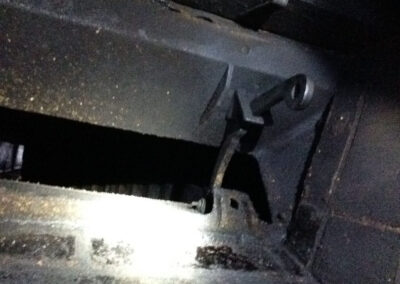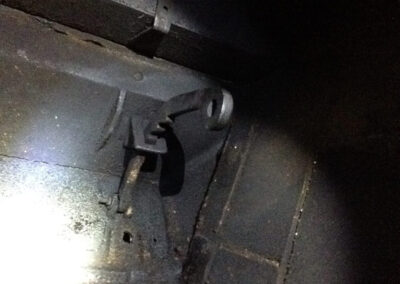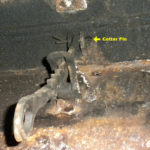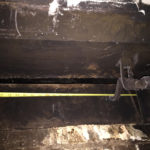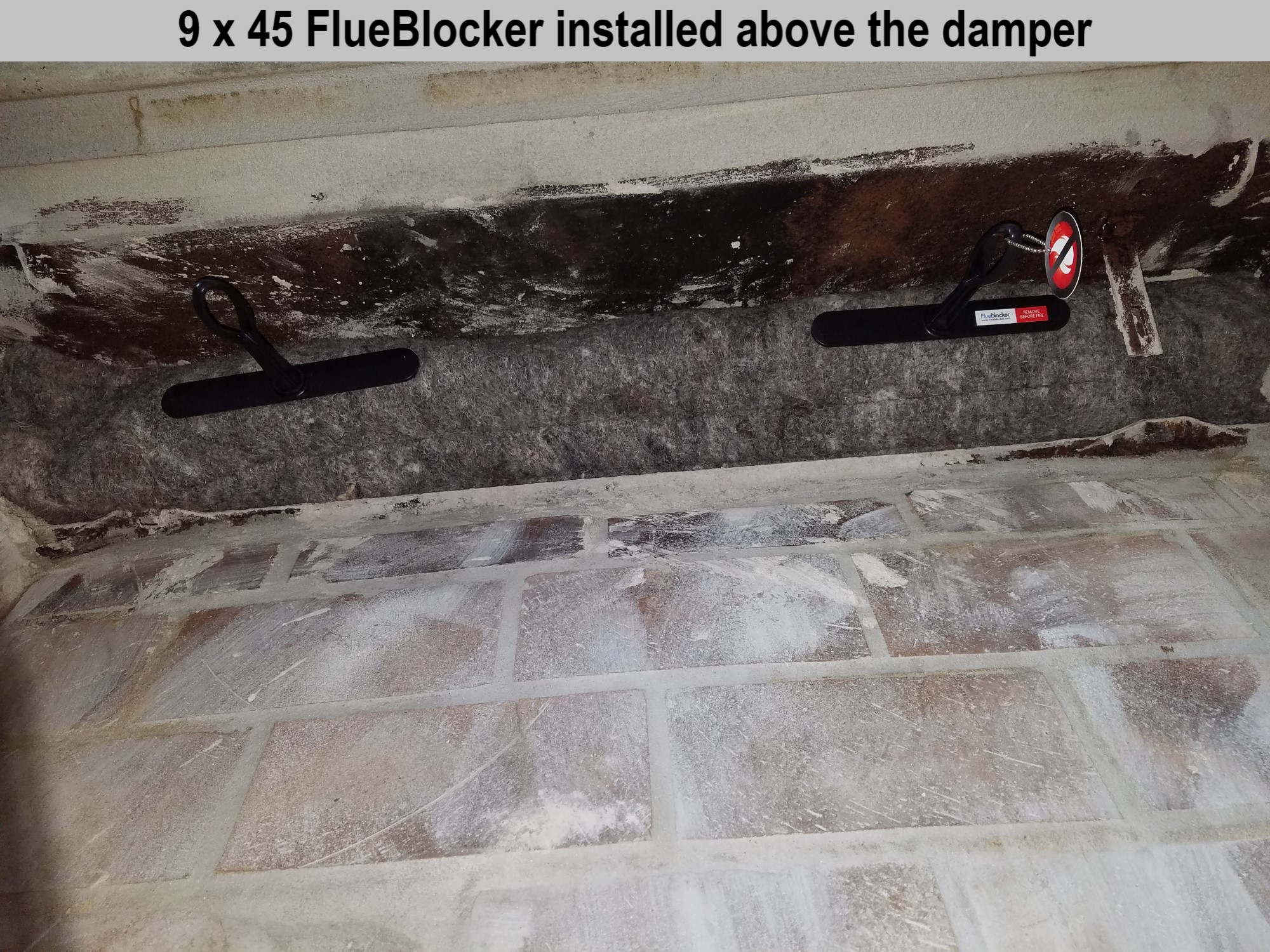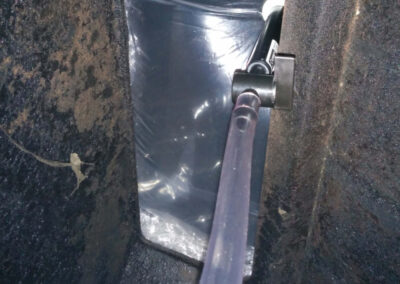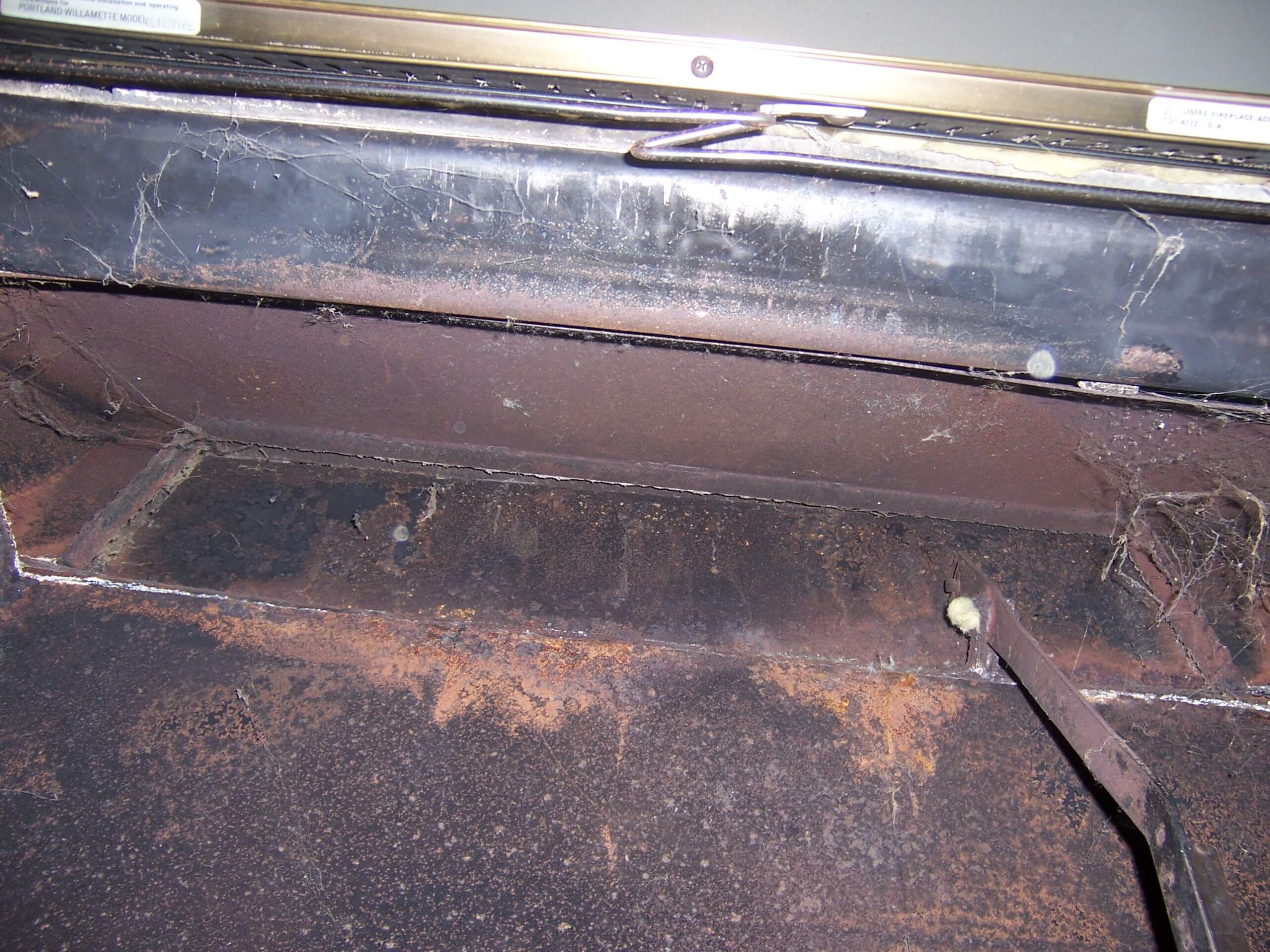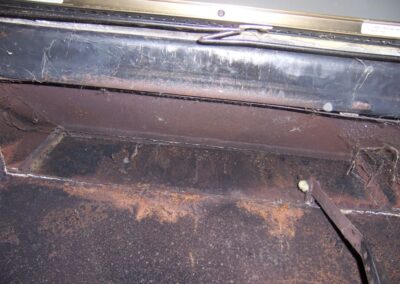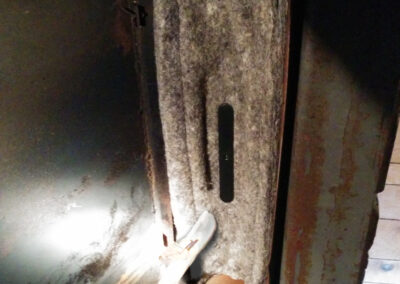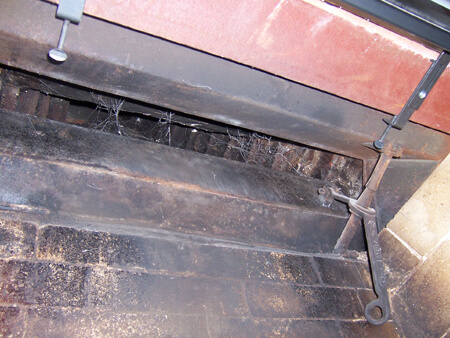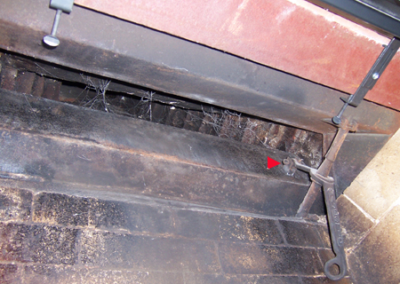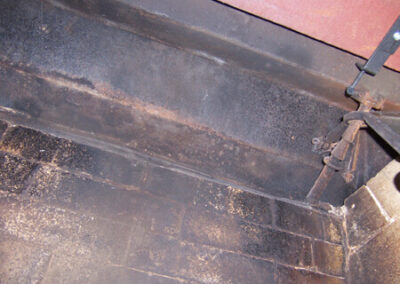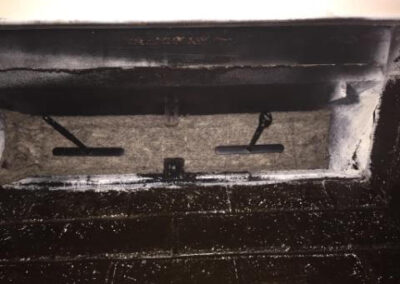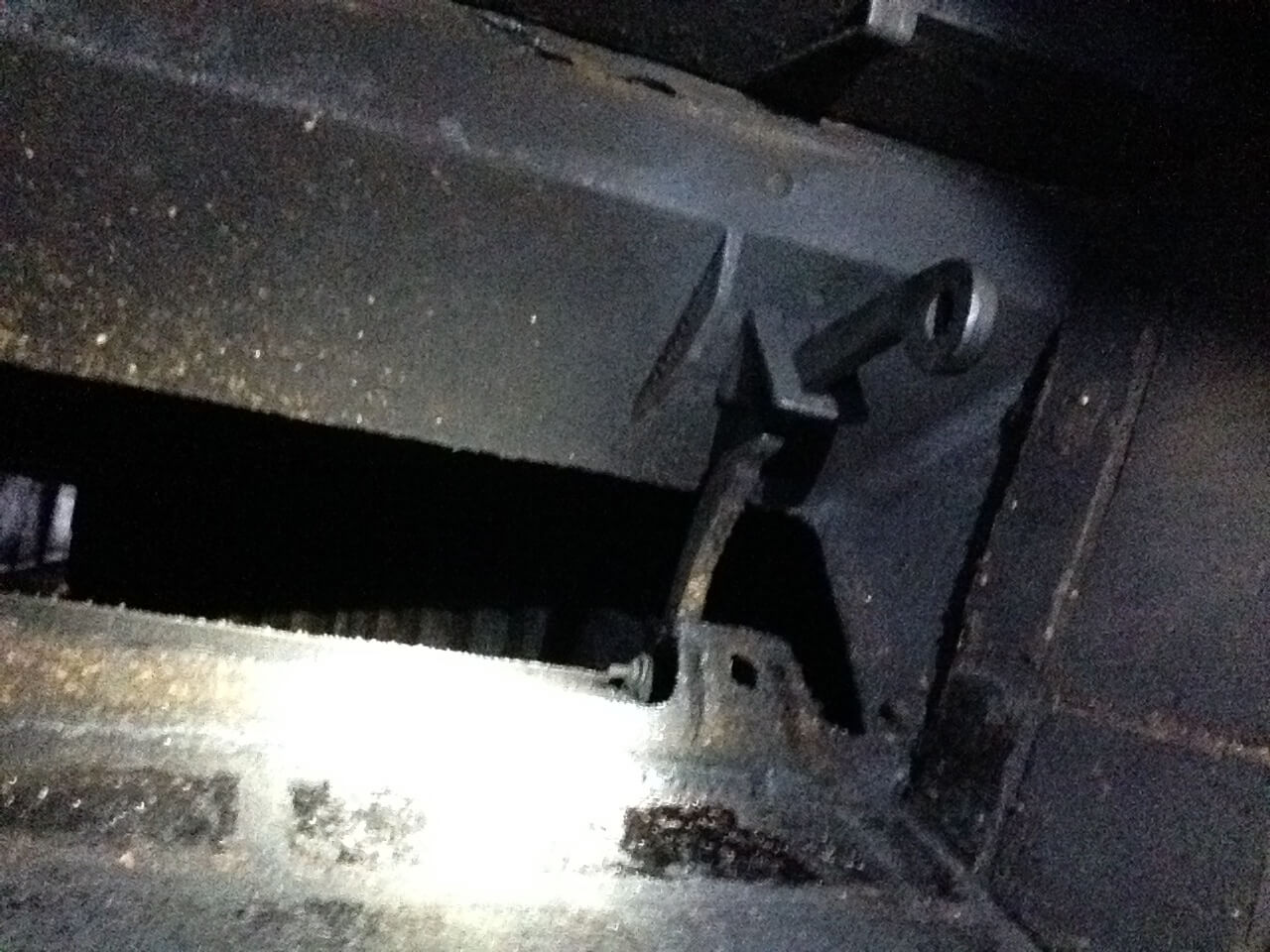
#33: I Have a Side Handle Vestal Damper. How Do I Plug the Flue?
#33: I Have a Side Handle Vestal Damper. How Do I Plug the Flue?
Fireplace #33: Side-Handle Vestal Damper
These Side-Handle Vestal Dampers are not very common. The Center-Handle Vestal Dampers are much more common. They are found in masonry fireplaces of solid brick or stone. These are their characteristics:
- They have a long rectangular cast iron damper frame and matching door.
- The door has a short curved cast iron handle sticking down with saw teeth (image 33-1)
- The damper handles can be a variety of designs (image 33-4).
- The handle pushes up through a bracket to open the damper door. (image 33-2)
- Handles are hinged to the damper door by a cotter pin or a bolt. (image 33-3)
- The damper door closes against the frame at a 45 degree angle, and opens past vertical.
There are both above the damper and below the damper install options for this application.
Flueblocker provides a durable and tight seal
The Flueblocker works well in this application, but you will have to get the damper door out of the way first. The Flueblocker will replace your metal damper door, and it will do a better job.
- With pliers, straighten and pull the cotter pin that holds the damper handle to the damper door (image 33-3). Then remove the damper handle.
- With the handle removed, you can push up on the damper door. It is now unhinged and free, since it is just setting in the frame by gravity. You can either flip the door back into the smoke shelf. Or turn the door sideways and lower it down through the damper frame to remove it.
- Measure the damper frame hole opening, and install a Flueblocker that is a few inches larger than the opening. It is best to hook the Flueblocker pad through the damper frame opening, and then pull the pad back toward you to seal (image 33-5)
- The Flueblocker is a wool pad with extra hems, so you can trim it down to size with sharp scissors.
If you want a tight seal, and don’t mind some maintenance, use a Chimney Balloon
The Chimney Balloon can work well in this application. It generally installs just above the damper frame at the bottom of the smoke shelf. It gives you a very tight seal, however it is an inflatable. So it is not as durable as the other options. And it requires a top-off on air every 6 to 12 months because of the swings in outside air temperature.
Here are the steps to use a Chimney Balloon:
- Open the damper as far as you can.
- With a folding carpenters ruler or tape measure, get the length and width of the smoke chamber area just above the damper frame .
- Buy a Chimney Balloon that is a little large for the application. For example, If you measure 33″L x 13″ W, buy a 36×15 Chimney Balloon.
- Lay the Chimney Balloon flat, then fold it in half length-wise (Like a big soft shell taco) away from the handle valve. This will allow you to easily tuck the deflated Chimney Balloon through the damper opening.
- When the deflated Chimney Balloon is setting on top of the damper frame, start blowing air into it. The damper frame will hold up the balloon as you inflate, and the belly of the balloon will be pressed against the damper frame. The handle valve will be sticking out of the damper frame opening. (image 33-6)
- Once the Chimney Balloon starts grabbing the sides of the chimney wall, do not reposition the balloon. The balloon material has a grabbing property on its outer layer. Moving it while it is grabbing will risk a puncture.
- Once it is installed you close the valve on the handle. You can then remove the inflation tube if you want to, or you can leave it hang down as a reminder.
